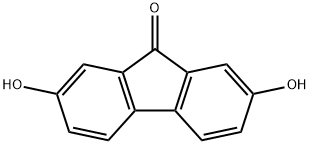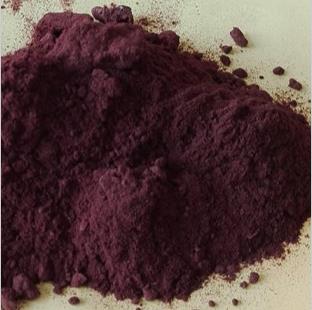Unveiling the Potential of 2,7-Dihydroxy-9-fluorenone: A Multifaceted Compound in Modern Chemistry
Introduction
2,7-Dihydroxy-9-fluorenone is a compound of significant interest within the chemistry community. Known for its distinctive structure, this organic compound finds itself at the crossroads of various scientific inquiries and applications. Discovered in the early 20th century, it has since become a focal point for researchers looking to exploit its unique properties. Its relevance has only grown in recent years, with advancements in technology allowing for deeper exploration of its potential[1].
Historically, 2,7-Dihydroxy-9-fluorenone's journey from an obscure molecular entity to a compound of interest illustrates the evolving landscape of chemical research. Initially studied for its basic chemical properties, it has now found applications that extend far beyond its original scope, highlighting the compound's versatility and innovative approaches to its study and application.
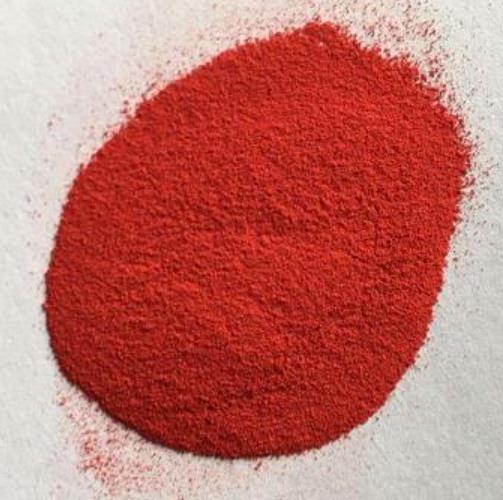
Figure 1 Characteristics of 2,7-Dihydroxy-9-fluorenone
Mechanism of Action
At the heart of 2,7-Dihydroxy-9-fluorenone's intrigue is its mechanism of action. This compound interacts with other molecules in a way that is both complex and enlightening. It functions through a series of interactions at the molecular level, often involving the transfer of electrons or the formation of bonds that alter the chemical structure of interacting substances.
In environments where 2,7-Dihydroxy-9-fluorenone is present, it demonstrates unique behaviors that can be attributed to its specific molecular configuration. For instance, its ability to donate hydroxyl groups makes it a valuable player in oxidation-reduction reactions, a property that can be leveraged in synthetic chemistry and materials science.
Comparatively, when placed alongside similar compounds, 2,7-Dihydroxy-9-fluorenone stands out for its efficacy and efficiency in catalyzing reactions. This distinction not only underscores its value but also opens up new avenues for research, particularly in developing more sustainable chemical processes and materials.
Applications
The versatility of 2,7-Dihydroxy-9-fluorenone spans across multiple disciplines, showcasing its remarkable utility in various scientific endeavors. One of the primary areas where this compound shines is in pharmaceuticals, where it has been explored for its potential therapeutic effects. Its unique chemical structure allows for interaction with biological molecules in ways that can inhibit or promote specific pathways, making it a candidate for drug development, particularly in treating diseases with oxidative stress components.
In material science, 2,7-dihydroxy-9-fluorenone has been pivotal in the development of advanced materials. Its properties are exploited in the creation of organic semiconductors and photovoltaic materials, contributing to the efficiency and performance of solar cells and electronic devices. The compound's ability to act as an electron acceptor makes it invaluable in designing materials that require precise control over electrical conductivity.
Furthermore, environmental chemistry benefits from the application of 2,7-Dihydroxy-9-fluorenone in detecting and breaking down pollutants. Its reactive nature enables it to bind with harmful chemicals, facilitating their degradation and removal from ecosystems. This attribute has spurred research into its use as a component in water purification systems and as a tool for environmental monitoring[2].
The ongoing exploration of 2,7-Dihydroxy-9-fluorenone's applications is a testament to the compound's potential to revolutionize various sectors. As research progresses, it's anticipated that new uses will emerge, further solidifying its status as a compound of interest in scientific and industrial communities.
Storage Methods
Preserving the integrity of 2,7-Dihydroxy-9-fluorenone requires adherence to specific storage protocols. Optimal conditions involve keeping the compound in a cool, dry place, away from direct sunlight. This precaution minimizes the risk of degradation due to exposure to light and heat, which can alter its chemical structure and reduce its efficacy.
Temperature control is crucial; storage in refrigerated conditions (2-8°C) is recommended to prolong the compound's shelf life. Additionally, the container material should be considered to prevent any potential reactions. Glass containers with airtight seals are preferred for long-term storage, as they offer protection against moisture and other environmental factors.
Safety considerations are paramount when handling and storing 2,7-dihydroxy-9-fluorenone. Given its potential reactivity, it's essential to follow established safety guidelines, including wearing appropriate protective gear and ensuring proper ventilation in storage areas. Compliance with regulatory standards is also critical to prevent accidental exposure and maintain a safe working environment.
References
[1]YANG, WY, et al. "PROCESS RESEARCH ON SYNTHESIS OF 2, 7-DIHYDROXY-9-FLUORENONE."WUHAN LIGONG DAXUE XUEBAO35.8 (2013): 34-38.
[2]Roxin, Aron.Photochemistry of 2, 7-disubstituted-9-fluorenyl Alcohols and Esters. Diss. Acadia University, 2009.
Related articles And Qustion
See also
Lastest Price from 2,7-Dihydroxy-9-fluorenone manufacturers
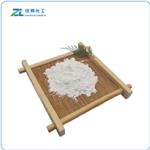
US $10.00/kg2025-04-21
- CAS:
- 42523-29-5
- Min. Order:
- 1kg
- Purity:
- 99%
- Supply Ability:
- 20 ton
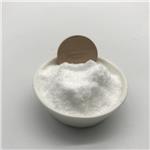
US $0.00-0.00/KG2025-04-15
- CAS:
- 42523-29-5
- Min. Order:
- 50KG
- Purity:
- 99%
- Supply Ability:
- 500000kg
